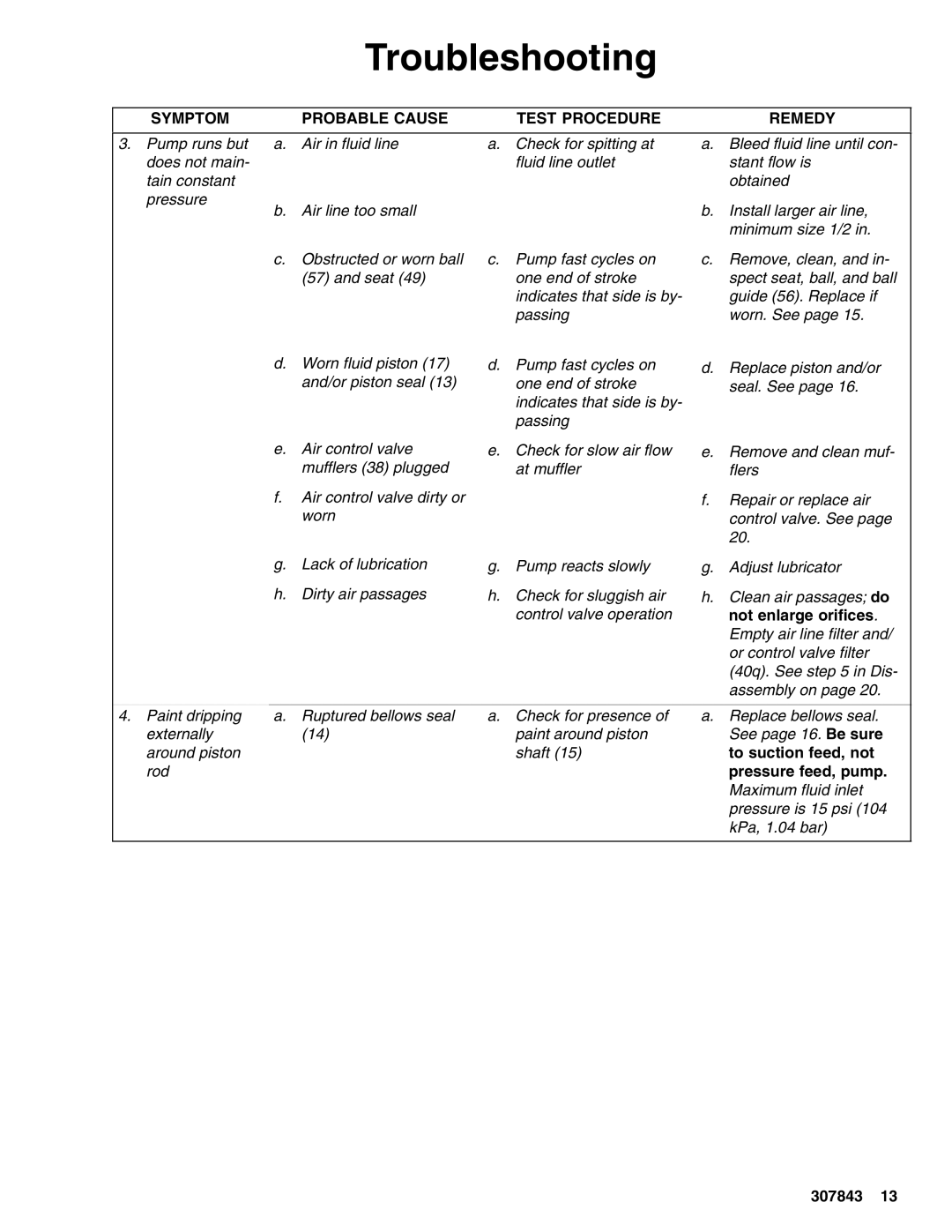
Troubleshooting
SYMPTOM | PROBABLE CAUSE | TEST PROCEDURE | REMEDY |
3. Pump runs but | a. | Air in fluid line |
does not main- |
|
|
tain constant |
|
|
pressure | b. | Air line too small |
| ||
| c. | Obstructed or worn ball |
|
| (57) and seat (49) |
| d. | Worn fluid piston (17) |
|
| and/or piston seal (13) |
a.Check for spitting at fluid line outlet
c.Pump fast cycles on one end of stroke indicates that side is by- passing
d.Pump fast cycles on one end of stroke indicates that side is by- passing
a.Bleed fluid line until con- stant flow is
obtained
b.Install larger air line, minimum size 1/2 in.
c.Remove, clean, and in- spect seat, ball, and ball guide (56). Replace if worn. See page 15.
d.Replace piston and/or seal. See page 16.
e.Air control valve mufflers (38) plugged
f.Air control valve dirty or worn
e.Check for slow air flow at muffler
e.Remove and clean muf- flers
f.Repair or replace air control valve. See page 20.
g. | Lack of lubrication | g. | Pump reacts slowly |
h. | Dirty air passages | h. | Check for sluggish air |
|
|
| control valve operation |
g.Adjust lubricator
h.Clean air passages; do not enlarge orifices. Empty air line filter and/ or control valve filter (40q). See step 5 in Dis- assembly on page 20.
4. Paint dripping | a. Ruptured bellows seal | a. Check for presence of |
externally | (14) | paint around piston |
around piston |
| shaft (15) |
rod |
|
|
a.Replace bellows seal. See page 16. Be sure to suction feed, not pressure feed, pump. Maximum fluid inlet pressure is 15 psi (104 kPa, 1.04 bar)
307843 13
